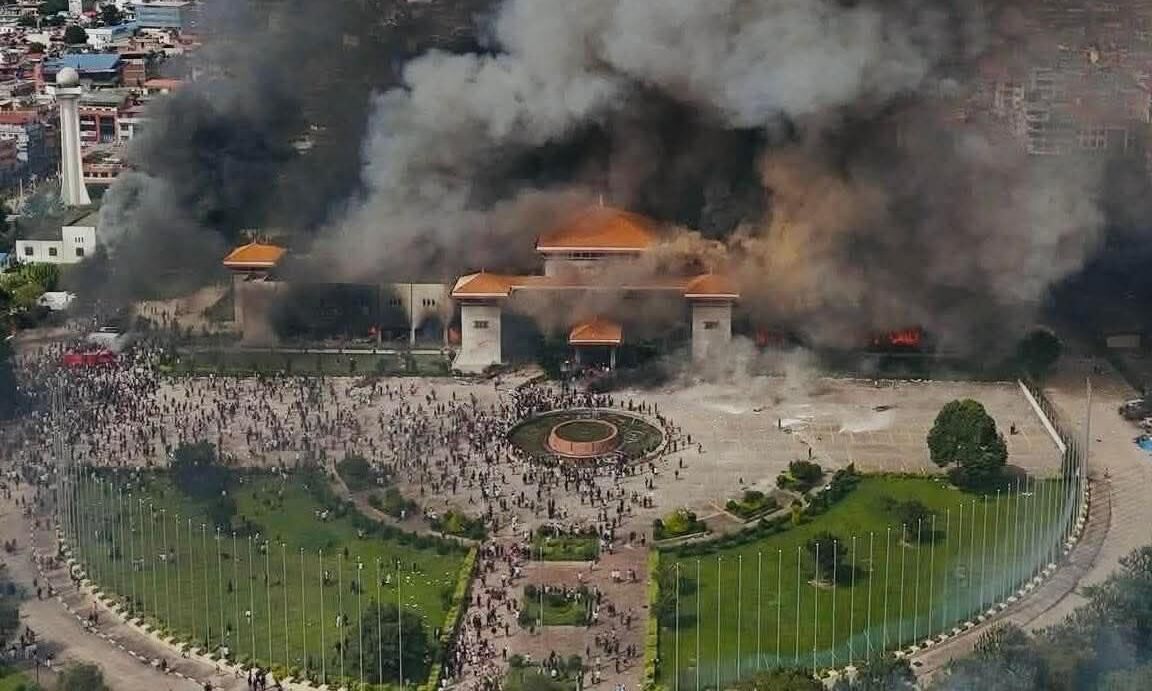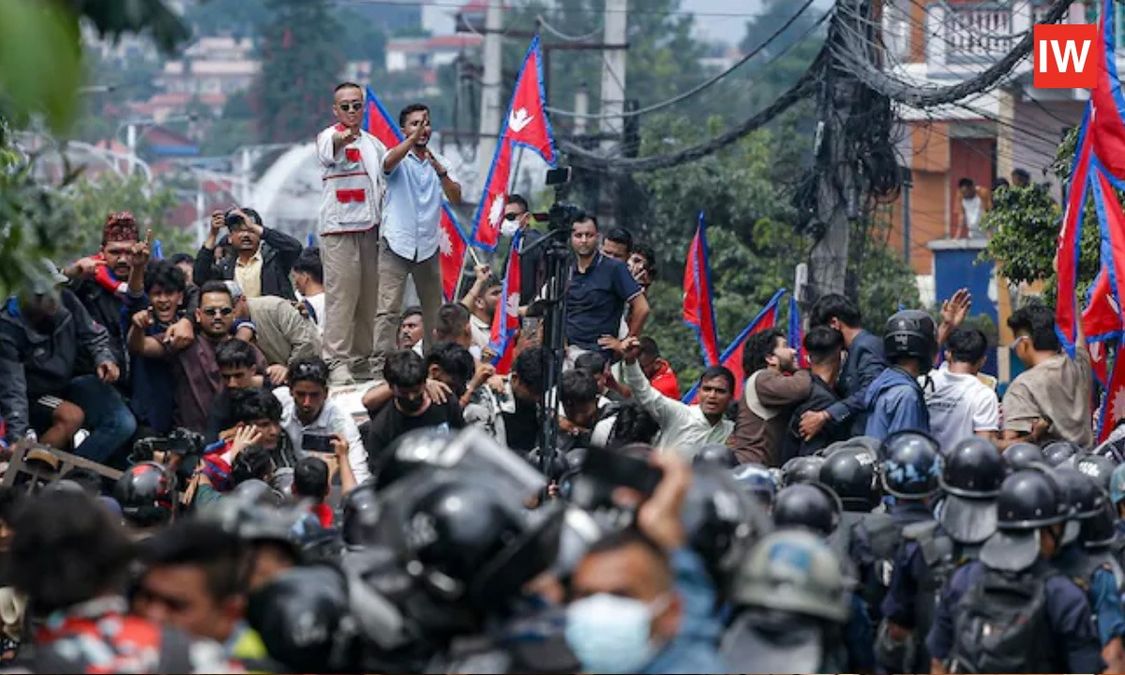The denunciation of nepotism and corruption is the main driving force behind the revolt in Nepal. Thousands of young people have gone viral with videos exposing and criticizing the ostentatious luxury of the country’s elite youth. This resentment toward the “nepo-kids” transcends borders: more and more young people across Asia are speaking out against nepotism in societies marked by growing inequality.
The viral videos begin with scenes of luxury and extravagance. A former Miss Nepal flaunts her vacations in exotic destinations, while another young woman proudly poses in designer clothes in front of mansions, all set to catchy American pop music. Suddenly, the tone shifts: the images turn to poverty and violence in Nepal, creating a stark and shocking contrast.
These clips multiplied in the days leading up to the demonstrations that forced the resignation of Nepal’s Prime Minister, K.P. Sharma Oli, on Tuesday, September 9. They often carry hashtags such as #nepobabies or #nepokids, ending with slogans like: “The ‘nepo-kids’ show off their lifestyle on Instagram and TikTok, but never explain where the money comes from.”
“Our taxes, your luxury… We pay, you show off,” they declare.
Gen-Z vs. ‘Nepo-Kids’
The prime minister’s resignation seems, for now, to have calmed the anger of many Nepalis. The protests—triggered by the government’s ban on several social media platforms and marked by violent repression that left more than 50 dead—have “given way to a phase of political negotiation,” according to Nepali political scientist Bhaskar Gautam.
But online, the #nepokids videos continue to spread at high speed, racking up hundreds of thousands of likes on TikTok and Instagram.
The movement in Nepal has been described as a Gen-Z revolt (those born from the late 1990s to early 2010s) against the “nepo-babies,” intensified by the social media ban and the bloody crackdown on demonstrations.
For weeks, videos have targeted the lavish social media lives of the daughter of a former health minister, singer Shivana Shrestha (also daughter-in-law of former prime minister Sher Bahadur Deuba), and Smita Dahal, granddaughter of Pushpa Kamal Dahal, another ex–prime minister and central figure in Nepalese politics for decades.
Posts by these “nepo-babies” on Instagram and TikTok, flaunting their luxury lifestyles, have been heavily criticized and repurposed by detractors.
“This is a social media trend that symbolizes the enormous frustration of Nepal’s youth in the face of growing inequality and the corruption benefitting the children of politicians,” explains Feyzil Ismail, a specialist in Nepal and protest movements at Goldsmiths, University of London.
The flood of viral videos about the “nepo-kids” acts as a release valve after years of unmet expectations.
“Nepotism is systemic and not new in Nepal. Before 1951, the Rana family ruled the country autocratically, appropriating resources and neglecting society’s needs,” Ismail notes.
After 30 years of autocracy, Nepal transitioned to democracy in 1990. However, “political parties failed to build institutions capable of addressing inequality, respecting diversity, and ensuring democratic accountability,” says Gautam.
“A few families continue to dominate the country, concentrating opportunities in their own hands,” adds Ismail.
Today, while a handful of Nepalis born on the privileged side of this democratic transition can enjoy elite education at Oxford or Cambridge and ski in Gstaad or Megève, “the rest of the population only sees widening wealth gaps and a lack of opportunities for the majority,” Ismail affirms.
This backdrop has fueled the online anti–nepo-kids movement. It goes beyond calling out the children of powerful families; it also includes boycotts of businesses tied to political elites.
“These campaigns have real economic consequences for companies linked to the elite,” Gautam points out.
From the Philippines to Nepal and Beyond
In the dynamics of the revolt that weakened Nepal’s ruling class, three factors converge: deep-rooted causes of anger forming the grounds for protest; the viral anti–“nepo-babies” phenomenon that amplified it; and the spark that ignited violence—namely, the brutal repression of protests, explains Janjira Sombatpoonsiri, a specialist in social movements and digital activism in Asia at the German Institute for Global and Area Studies (GIGA) in Hamburg.
These TikTok videos are an important piece of the puzzle, but the trend itself was imported. Before Nepal, anger against “nepo-kids” emerged among connected youth in the Philippines, a country with a long tradition of family dynasties accused of hoarding wealth. President Ferdinand Marcos Jr. came to power 36 years after his father, dictator Ferdinand Marcos, was forced from office.
In the Philippines, the hunt for “nepo-babies” even has subcategories. On Reddit, the forum lifestylecheckPH tracks “flood control nepo-kids,” children of construction tycoons responsible for infrastructure to protect against disasters. Criticizing these youth is perceived as a form of activism, notes Asia News.
A Regional Phenomenon
Experts interviewed by France 24 stress that this trend is repeating across different countries. “There are informal links between youth in the region who adapt these trends to their local context,” says Ismail.
It could even expand further. “Nepotism is also a major problem in Indonesia and Thailand, where five or six families control most of the economic sectors,” Sombatpoonsiri emphasizes.
In Bangladesh in 2024, a revolt broke out over a law reserving public jobs for families tied to those in power. Nepal’s uprising has been compared to the one that ousted Prime Minister Sheikh Hasina in August 2024.
The anger against normalized nepotism is no coincidence. “These are manufacturing countries that in the 1980s and 90s offered cheap labor to the world. This gave rise to a middle class that expected education and opportunities for their children, but that never came. With the economic crisis and precarious jobs, the middle class is shrinking while the elites grow richer,” explains Sombatpoonsiri.
In Nepal, the denunciation of the “nepo-kids” reflects a desire for the elite to be held accountable and to share wealth more fairly. The challenge is where this movement will lead.
“There is growing involvement of the military in Nepal, which is concerning. If the protests fall under military control, the country could slide toward an authoritarian regime,” warns Gautam.
“Moreover, online movements spread so quickly that participants often don’t have time to reflect on their ultimate goals,” concludes Sombatpoonsiri.







Comments (0)